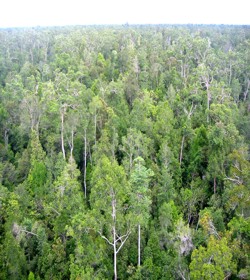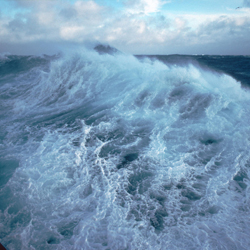Science Highlight
Anthropogenic perturbation of the carbon fluxes from land to ocean
Regnier P, Friedlingstein P, Ciais P, Mackenzie FT, Gruber N, Janssens IA, Laruelle GG, Lauerwald R, Luyssaert S, Andersson AJ, Arndt S, Arnosti C, Borges AV, Dale AW, Gallego-Sala A, Goddéris Y, Goossens N, Hartmann J, Heinze C, Ilyina T, Joos F, LaRowe DE, Leifeld J, Meysman FJR, Munhoven G, Raymond PA, Spahni R, Suntharalingam P, Thullner M.
Nature Geoscience
Published online 9 June 2013
DOI:10.1038/NGEO1830
Key results of the research (pdf, 1.7mb)
Lead
A substantial amount of the atmospheric carbon taken up on land through photosynthesis and chemical weathering is transported laterally along the aquatic continuum from upland terrestrial ecosystems to the ocean. We show that anthropogenic perturbation may have increased the flux of carbon to inland waters by as much as 1.0 Pg C yr-1 since pre-industrial times, mainly owing to enhanced carbon export from soils.
Paper Abstract
A substantial amount of the atmospheric carbon taken up on land through photosynthesis and chemical weathering is transported laterally along the aquatic continuum from upland terrestrial ecosystems to the ocean. So far, global carbon budget estimates have implicitly assumed that the transformation and lateral transport of carbon along this aquatic continuum has remained unchanged since pre-industrial times. A synthesis of published work reveals the magnitude of present-day lateral carbon fluxes from land to ocean, and the extent to which human activities have altered these fluxes. We show that anthropogenic perturbation may have increased the flux of carbon to inland waters by as much as 1.0 Pg C yr-1 since pre-industrial times, mainly owing to enhanced carbon export from soils. Most of this additional carbon input to upstream rivers is either emitted back to the atmosphere as carbon dioxide (~0.4 Pg C yr-1) or sequestered in sediments (~0.5 Pg C yr-1) along the continuum of freshwater bodies, estuaries and coastal waters, leaving only a perturbation carbon input of ~0.1 Pg C yr-1 to the open ocean. According to our analysis, terrestrial ecosystems store ~0.9 Pg C yr-1 at present, which is in agreement with results from forest inventories but significantly differs from the figure of 1.5 Pg C yr-1 previously estimated when ignoring changes in lateral carbon fluxes. We suggest that carbon fluxes along the land–ocean aquatic continuum need to be included in global carbon dioxide budgets.
Manuscript
- Download paper from Nature: http://www.nature.com/ngeo/journal/vaop/ncurrent/full/ngeo1830.html
- Contact lead author: Pierre Regnier
| Illustrative Photos (available free if credited as specified) | ||
|---|---|---|
 |
 |
Tropical Forest remove large quantities of atmospheric carbon dioxide (Borneo depicted). |
Southern ocean waves |
 |
sdfs |
Sunset with clouds over ocean. |
sdfs | |
